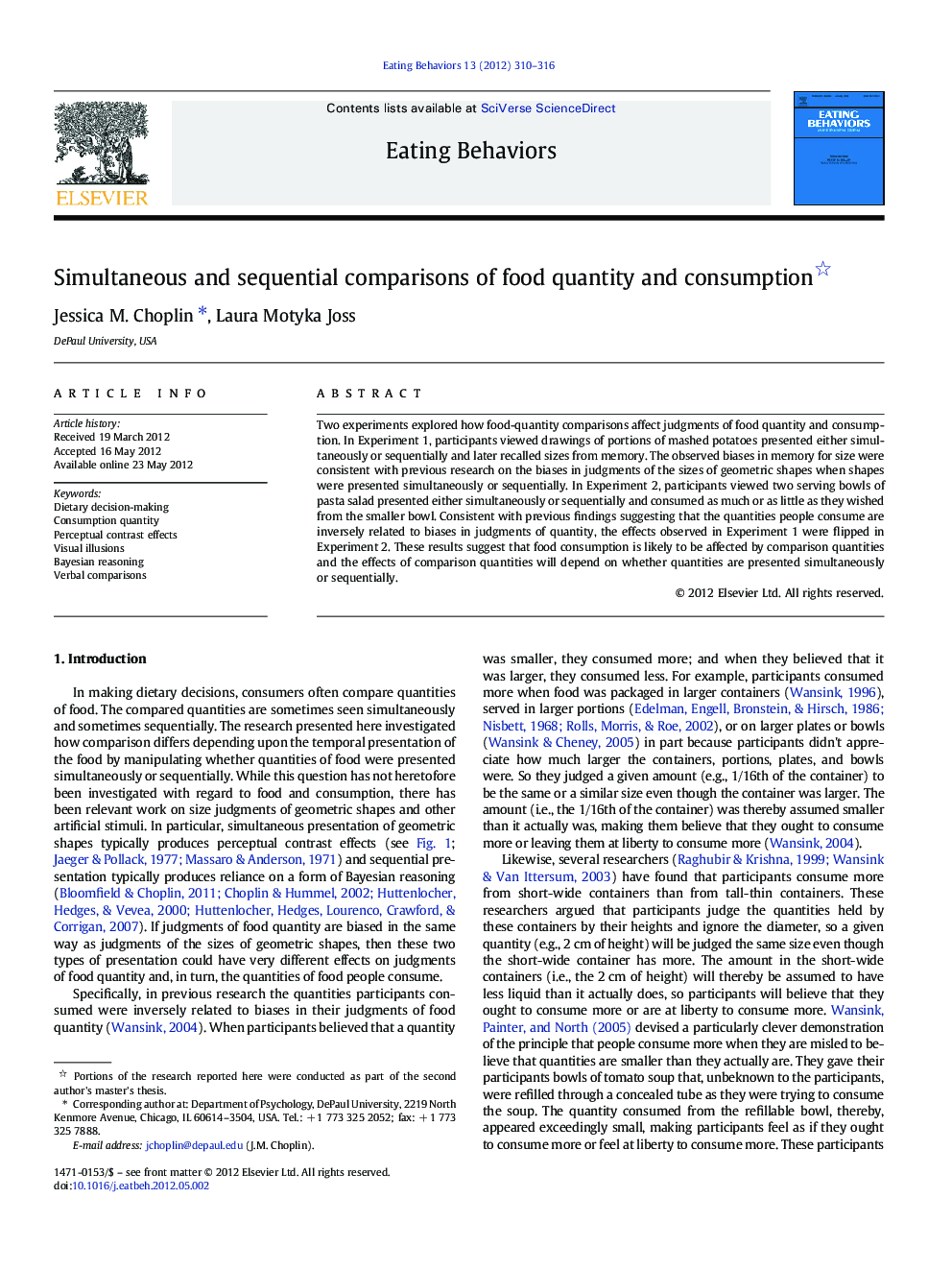| Article ID | Journal | Published Year | Pages | File Type |
|---|---|---|---|---|
| 906655 | Eating Behaviors | 2012 | 7 Pages |
Two experiments explored how food-quantity comparisons affect judgments of food quantity and consumption. In Experiment 1, participants viewed drawings of portions of mashed potatoes presented either simultaneously or sequentially and later recalled sizes from memory. The observed biases in memory for size were consistent with previous research on the biases in judgments of the sizes of geometric shapes when shapes were presented simultaneously or sequentially. In Experiment 2, participants viewed two serving bowls of pasta salad presented either simultaneously or sequentially and consumed as much or as little as they wished from the smaller bowl. Consistent with previous findings suggesting that the quantities people consume are inversely related to biases in judgments of quantity, the effects observed in Experiment 1 were flipped in Experiment 2. These results suggest that food consumption is likely to be affected by comparison quantities and the effects of comparison quantities will depend on whether quantities are presented simultaneously or sequentially.
► Quantities of food were presented either simultaneously or sequentially. ► Quantity estimation was consistent with previous research on geometric shapes. ► The pattern of consumption was the flip of the pattern of quantity estimation. ► Conclusion: comparison quantities and temporal presentation affect consumption.
